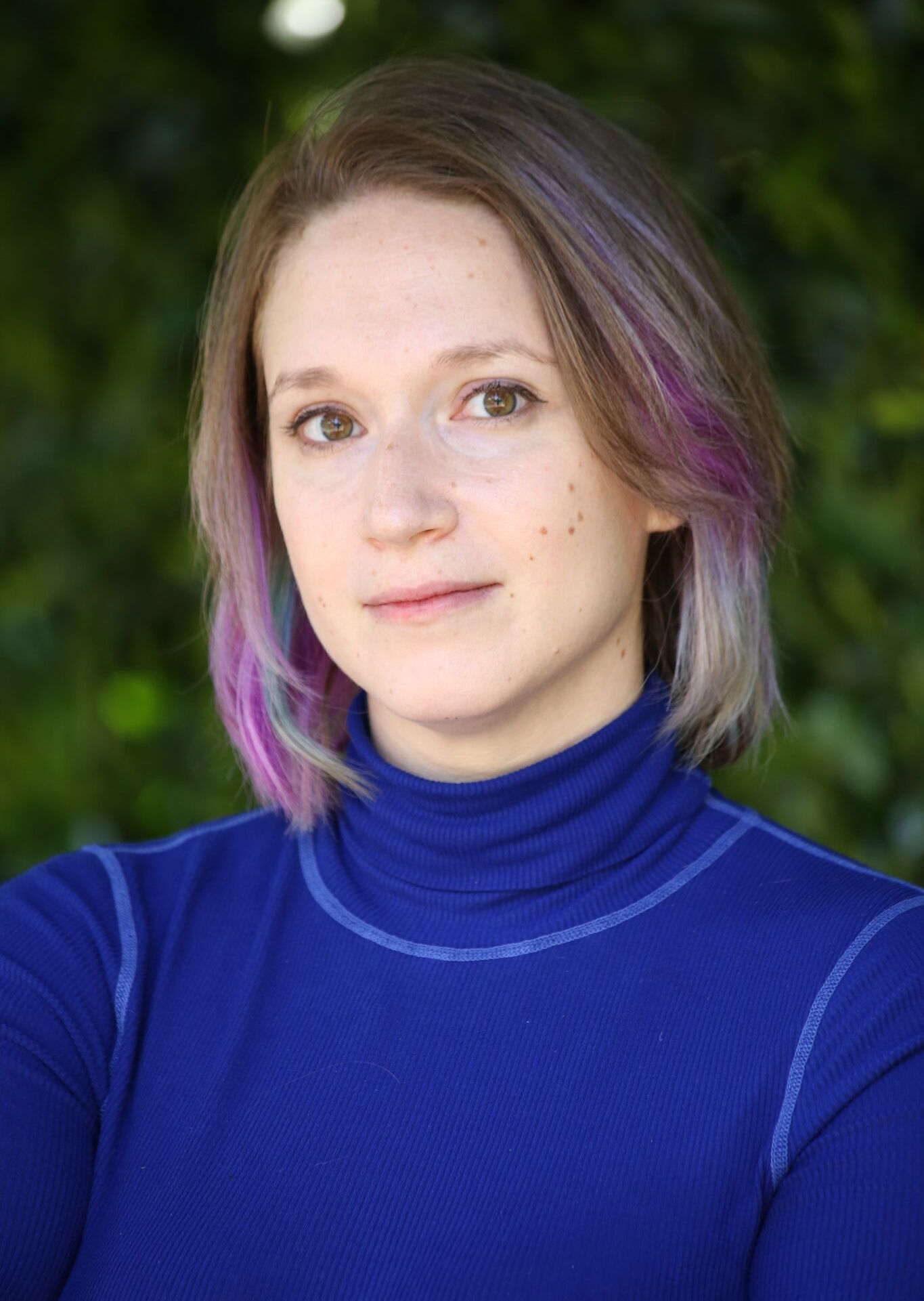White supremacists, misogynists and alt-right groups have occupied space on the internet and social media channels for nearly a decade.
Today, they have coalesced into an online community known as the “Red PillThe Red Pill concept originated in the 1999 film "The Matrix," in which Keanu Reeves’s character Neo is offered a blue pill to remain in blissful ignorance of reality, or a red pill where the actual truth isn't so pretty. ,” its members bound together by their shared grievances with women, immigrants and political correctness.
And now they are co-opting classical Greek and Roman texts to support their racist and sexist ideologies.
No one knows this better than Donna Zuckerberg, whose 2018 book, “Not All Dead White Men: Classics and Misogyny in the Digital Age,” examined this phenomenon and claims that “social media has elevated misogyny to new levels of violence.”
A Silicon Valley-based classicist who received her doctoral training at Princeton University, Zuckerberg is the founder and editor-in-chief of Eidolon, a prize-winning online classics magazine. At 7 p.m. April 11, Zuckerberg will present “The Classics Between White Supremacy and White Fragility” at Arizona State University’s Memorial Union on the Tempe campus. The event is co-hosted by the Arizona Center for Medieval and Renaissance Studies and the Institute For Humanities Research, and it is free and open to the public. However, registration is encouraged.
The event also will be streamed on ASU Live.
ASU Now caught up with Zuckerberg before her lecture and book signing to discuss her findings.
Donna Zuckerberg
Question: Who is in the "Red Pill" community? It seems there are a few groups at play here.
Answer: It’s a great question because my book project started out addressing anti-feminists on the internet. Over the course of 2016, I saw that these websites that had previously been filled with misogynist and anti-feminist rhetoric started becoming anti-Semitic in the first part of 2016 and by the end of that year became openly white ethnonationalists. So there really isn’t a strong dividing line in between the sexist online right and the racist online right. In a certain way, sexism is inherent to any racial project like white supremacy because in order for white supremacy to work, in theory, you would need to have more white babies. And in order to get more white babies, you need to control the reproductive systems of white women.
The Red Pill online community is morphing. It has been gradually changing since 2012. When they first started, it was men on the right, pickup artists, a little anti-political correctness. In 2014, you have Gamergate, which is more sharply focused against anti-social justice rhetoric and women in video game (careers). In 2016, you have the U.S. presidential election, which then brings in the alt-right.
Q: What are the demographics of the Red Pill community?
A: A lot of younger men but also a lot of others who started in their 20s and are now in their mid-30s, because the Red Pill has been around for over a decade. So they are aging, but the real growth area is younger people. It’s hard to know, even though there have been self-reported surveys, but there’s no good methodology on figuring out the demographics.
Q: You say that alt-right online communities have been increasingly mobilizing symbols, texts and figures from classics as shorthand to promote racist and sexist ideologies. Why are they doing this?
A: For a few reasons: It legitimizes them intellectually. They have positioned themselves as the inheritors of the legacy of the Western civilization — that makes them both feel and look much more legitimate, and also empowered. It creates historical continuity for them also. They look back to periods in the past when they have patriarchy and, to their minds, when there was a flourishing of white culture. Put an asterisk on that because I would say that “whiteness” is not a very meaningful category in the context of ancient Greece and Rome. Regardless, they look back to these periods … and say it was a time of greatness if we follow traditional Western values.
Q: What are some of the symbols they are using?
A: There are a few. When we’re especially talking about white national militias of the sort of Proud Boys and Oath Keeper types, then you have symbols both from ancient Sparta: the giant lambda (for Lacedaemon) and the phrase “Molon labe”, which means “Come and get them.” That is attributed by Plutarch to the Spartan king Leonidas at Thermopylae. There is also a symbol of the fascists, which is a very potent symbol and points back both to ancient Rome and the Italian fascists of the 20th century. It is part of how they use the classics to work for them.
Classical antiquity is also a great topic of interest for several other white supremacist groups throughout history, most notably the Nazis and also the slave owners of the antebellum U.S. south. ... Using classical antiquity in today’s internet age can cement a place for the online far-right in the genealogy of white supremacist ideology.
Q: Are the symbols also shorthand communication?
A: They are. I say in my book the classics have become like a meme for them. If you say that you’re a fan of the classics, most likely you’re telling another person you’re an ally of theirs in their mind. Progressives tend to feel a little ambivalent about the classics and what that legacy means. If there’s unheralded praise of the classics, that’s seen as politically right wing.
These groups are also interested in the broad concept of the fall of the Roman empire, especially because they like to state — wrongly — that it was caused by illegal immigration.
Q: Are technology and social media making it easier for these groups to survive?
A: Technology and social media are making it easier for all like-minded individuals to connect, and white supremacists are among those groups. … Some of them are very good on social media, and it’s really their home: It’s where they are their strongest. Their attempts to move into the real world sphere have been successful — but only moderately — whereas online they have been extremely successful.
Q: How big are these groups?
A: It’s definitely in the hundreds of thousands based on the major message boards. Not all of those people are super active. Then there are the bot armies, essentially fake Twitter accounts that don’t have a person behind them but have an alt-right message because all of the rhetoric is similar. So they can make it feel like they are much bigger than they are.
Q: How dangerous are these groups and how concerned should we be?
A: I think we should be concerned for a few reasons. First of all, it is clear that the rhetorical and verbal violence of these sites has metastasized into the “real world.” There have been violent attacks and murders that were motivated by alt-right and Red Pill ideology. So this by no means is only a problem that exists on the internet. Second, their stated goal in 2016 was just to shift the Overton window, which is the set of ideas that are broadly and socially acceptable to talk about in political discourse. In that goal, they have largely succeeded. Now we have congressmen like Steve King who talks about how we need more white people and that we can’t rebuild our society with other people's babies. Those kinds of ideas, this fear that people of color are going to take over, have real policy consequences. In a similar vein, I think it’s really disturbing to have groups of thousands of men recirculating misogynist ideas and egging each other on. It normalizes really horrible ways of treating women.
Q: What are the ways you are working toward solutions to combat these groups?
A: I think researching it, talking about it, opening up discussion and making people aware that this exists is the work I’m doing. I’m not engaged in any other type of advocacy. However, in a general sense, I do support deplatforming Red Pill and alt-right figures on various social media sites like YouTube.
More Science and technology

Transforming Arizona’s highways for a smoother drive
Imagine you’re driving down a smooth stretch of road. Your tires have firm traction. There are no potholes you need to swerve to avoid. Your suspension feels responsive. You’re relaxed and focused on…

The Sun Devil who revolutionized kitty litter
If you have a cat, there’s a good chance you’re benefiting from the work of an Arizona State University alumna. In honor of Women's History Month, we're sharing her story.A pioneering chemist…

ASU to host 2 new 51 Pegasi b Fellows, cementing leadership in exoplanet research
Arizona State University continues its rapid rise in planetary astronomy, welcoming two new 51 Pegasi b Fellows to its exoplanet research team in fall 2025. The Heising-Simons Foundation awarded the…



